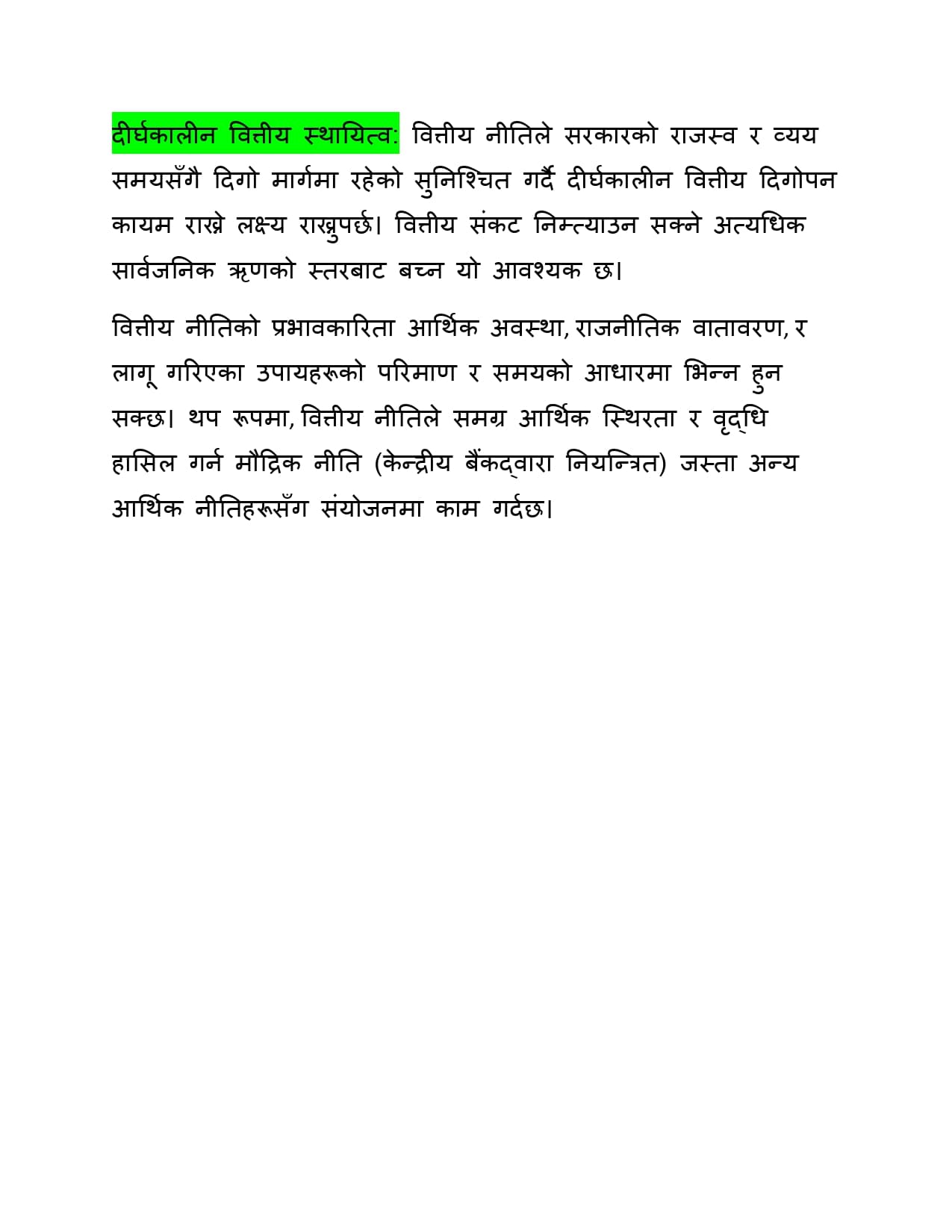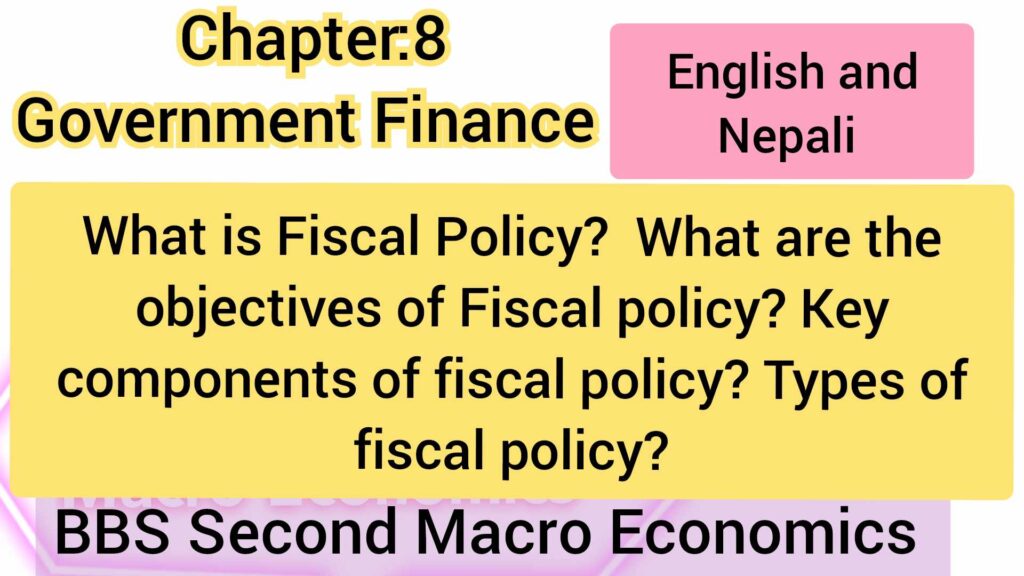BBS Second Macro Economics
Chapter: 8
Government Finance
What is Fiscal Policy? What are the objectives of Fiscal policy? Key components of fiscal policy? Types of fiscal policy?
What is fiscal policy?
Fiscal policy refers to the use of government spending and taxation to influence the economy’s overall performance and achieve specific economic objectives.
It is one of the essential tools in the government’s economic policy to manage the economy.
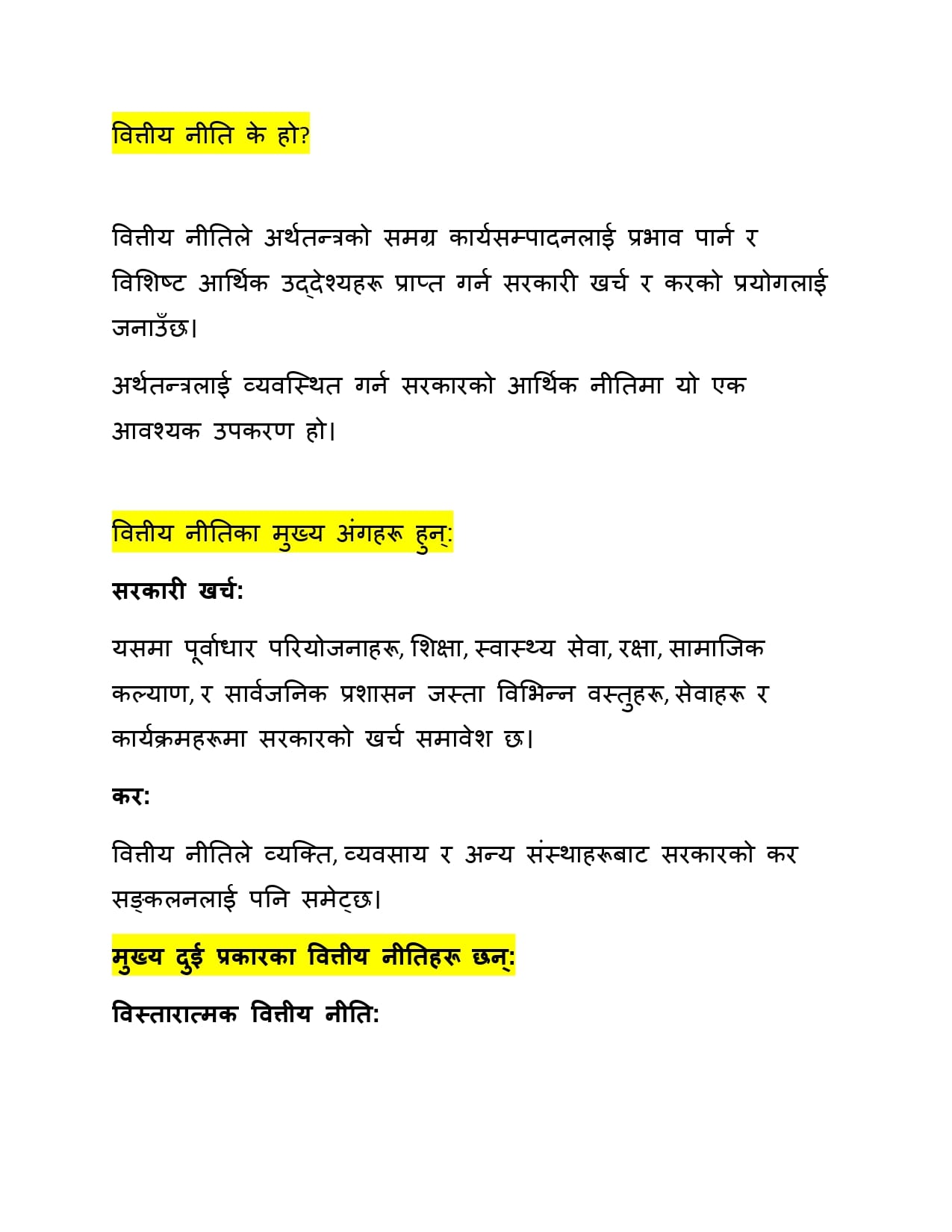
The key components of fiscal policy are:
Government Spending:
This involves the government’s expenditure on various goods, services, and programs, such as infrastructure projects, education, healthcare, defense, social welfare, and public administration.
Taxation:
Fiscal policy also encompasses the government’s collection of taxes from individuals, businesses, and other entities.
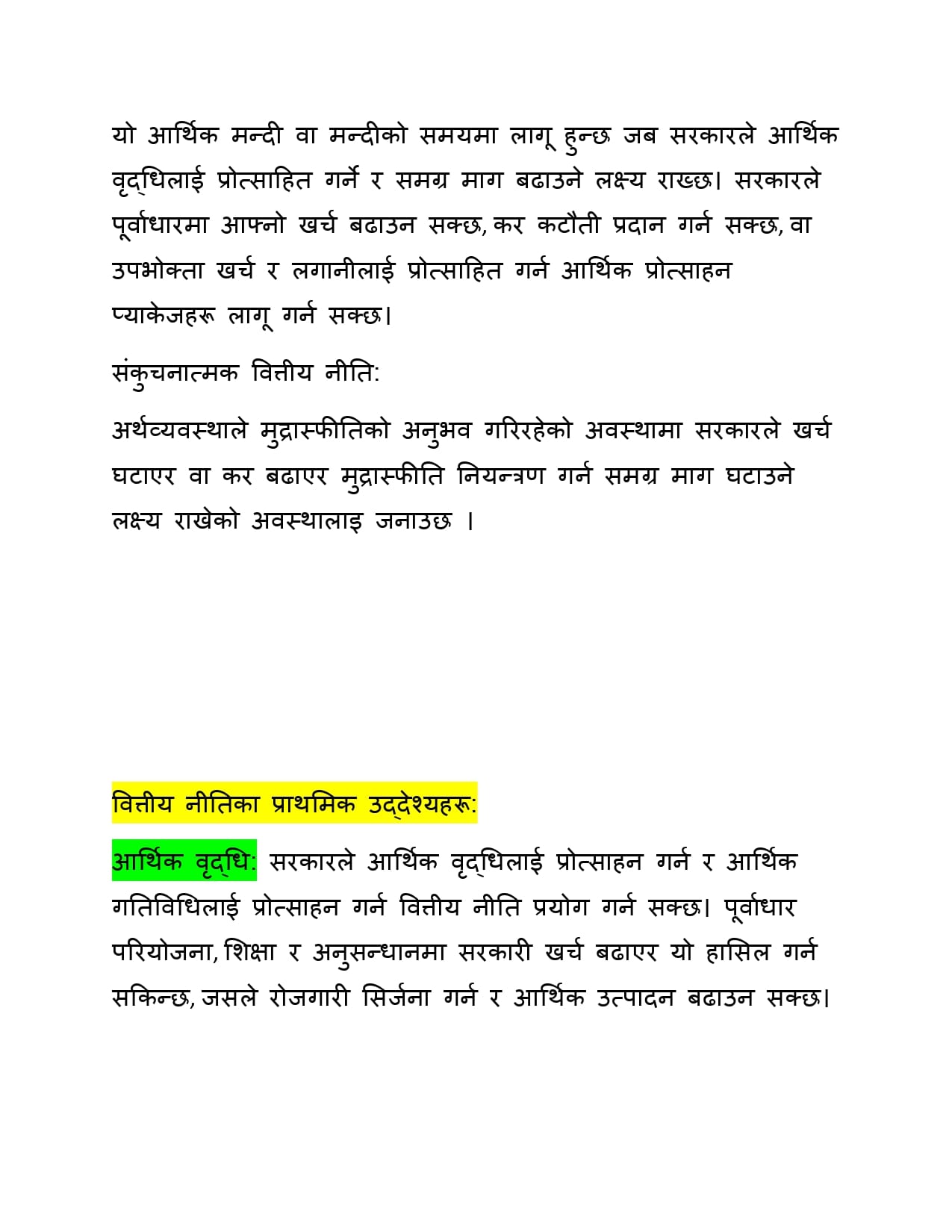
There are two main types of fiscal policy:
Expansionary Fiscal Policy:
This is implemented during economic downturns or recessions when the government aims to stimulate economic growth and increase aggregate demand. The government may increase its spending on infrastructure, provide tax cuts, or introduce economic stimulus packages to encourage consumer spending and investment.
Contractionary Fiscal Policy:
This is used when the economy is experiencing inflation or is overheating. The government will aim to reduce aggregate demand to control inflation by cutting spending or increasing taxes, thereby cooling down the economy.
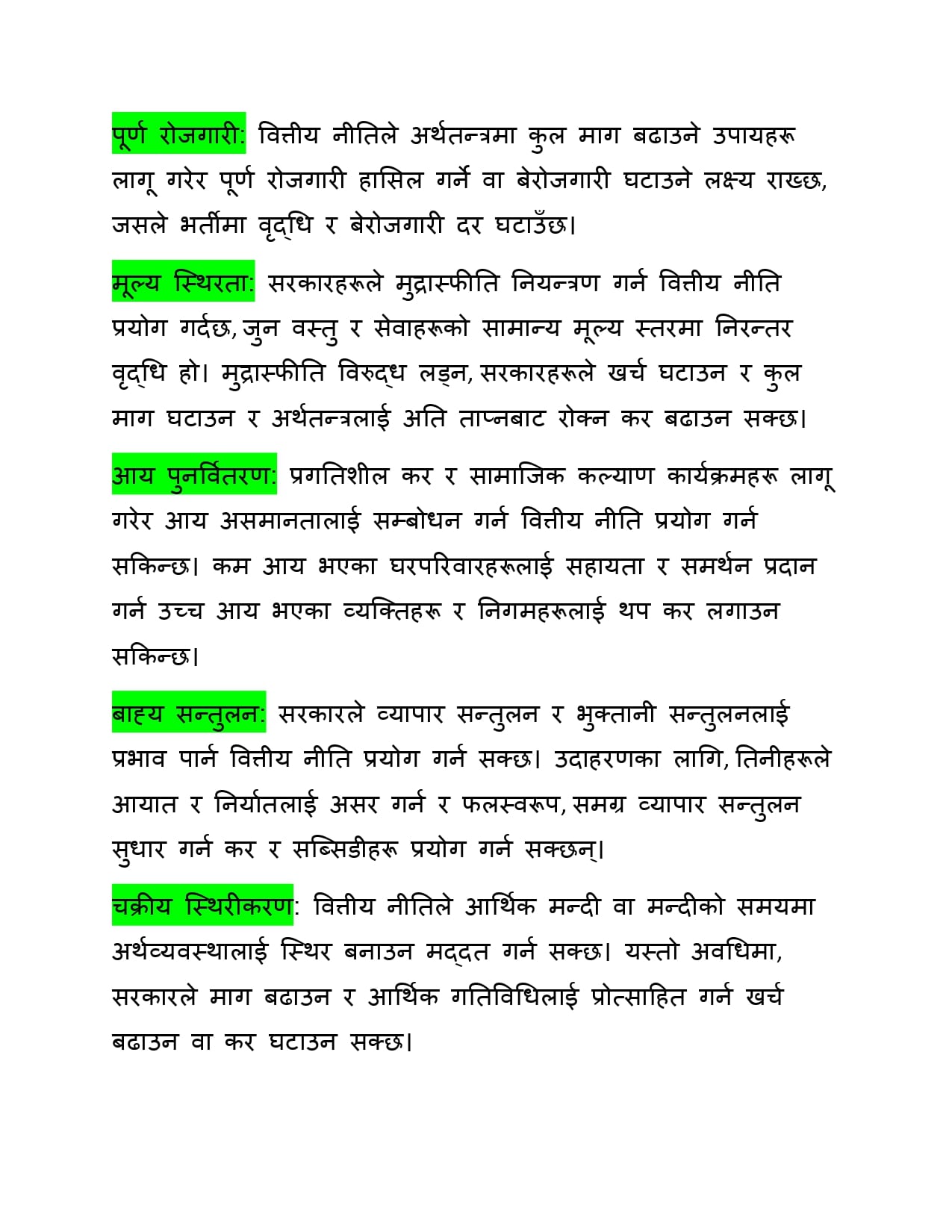
The primary objectives of fiscal policy can include:
Economic Growth: Governments can use fiscal policy to encourage economic growth and stimulate economic activity. This can be achieved by increasing government spending on infrastructure projects, education, and research, which can create jobs and boost economic output.
Full Employment: Fiscal policy aims to achieve full employment or reduce unemployment by implementing measures that increase aggregate demand in the economy, leading to increased hiring and lower unemployment rates.
Price Stability: Governments use fiscal policy to control inflation, which is the sustained increase in the general price level of goods and services. To combat inflation, governments may reduce spending and increase taxes to reduce aggregate demand and prevent the economy from overheating.
Income Redistribution: Fiscal policy can be used to address income inequality by implementing progressive taxation and social welfare programs. Higher-income individuals and corporations may be taxed more to provide assistance and support to low-income households.
External Balance: Governments can use fiscal policy to influence the balance of trade and balance of payments. For instance, they may use taxes and subsidies to affect imports and exports and, in turn, improve the overall trade balance.
Counter-cyclical Stabilization: Fiscal policy can help stabilize the economy during economic downturns or recessions. During such periods, the government may increase spending or reduce taxes to boost demand and stimulate economic activity.
Long-term Fiscal Sustainability: Fiscal policy should also aim to maintain long-term fiscal sustainability, ensuring that government revenues and expenditures are on a sustainable path over time. This is essential to avoid excessive public debt levels that can lead to fiscal crises.
It’s important to note that the effectiveness of fiscal policy can vary depending on the economic conditions, the political climate, and the magnitude and timing of the measures implemented. Additionally, fiscal policy works in conjunction with other economic policies, such as monetary policy (controlled by central banks), to achieve overall economic stability and growth.
